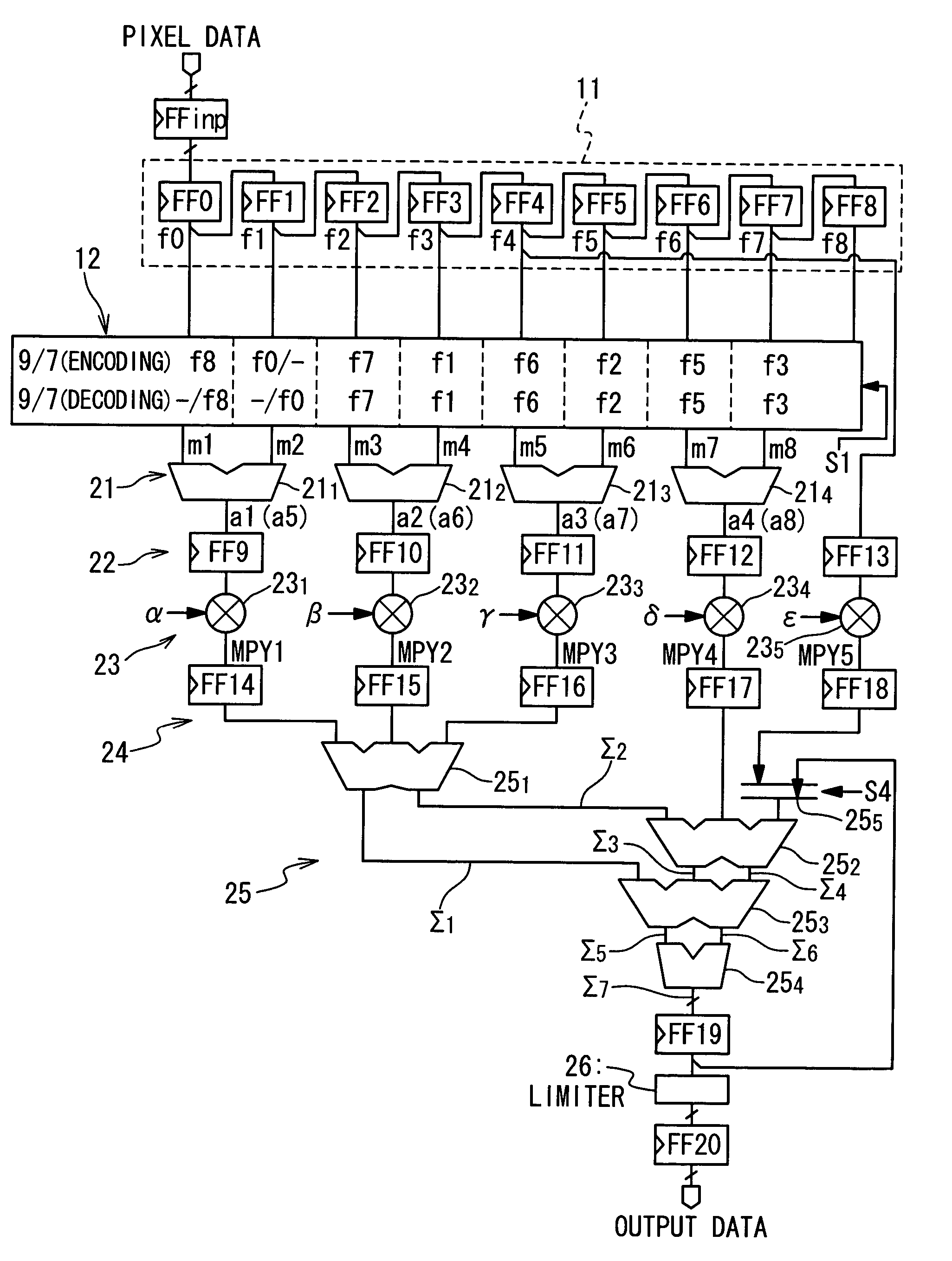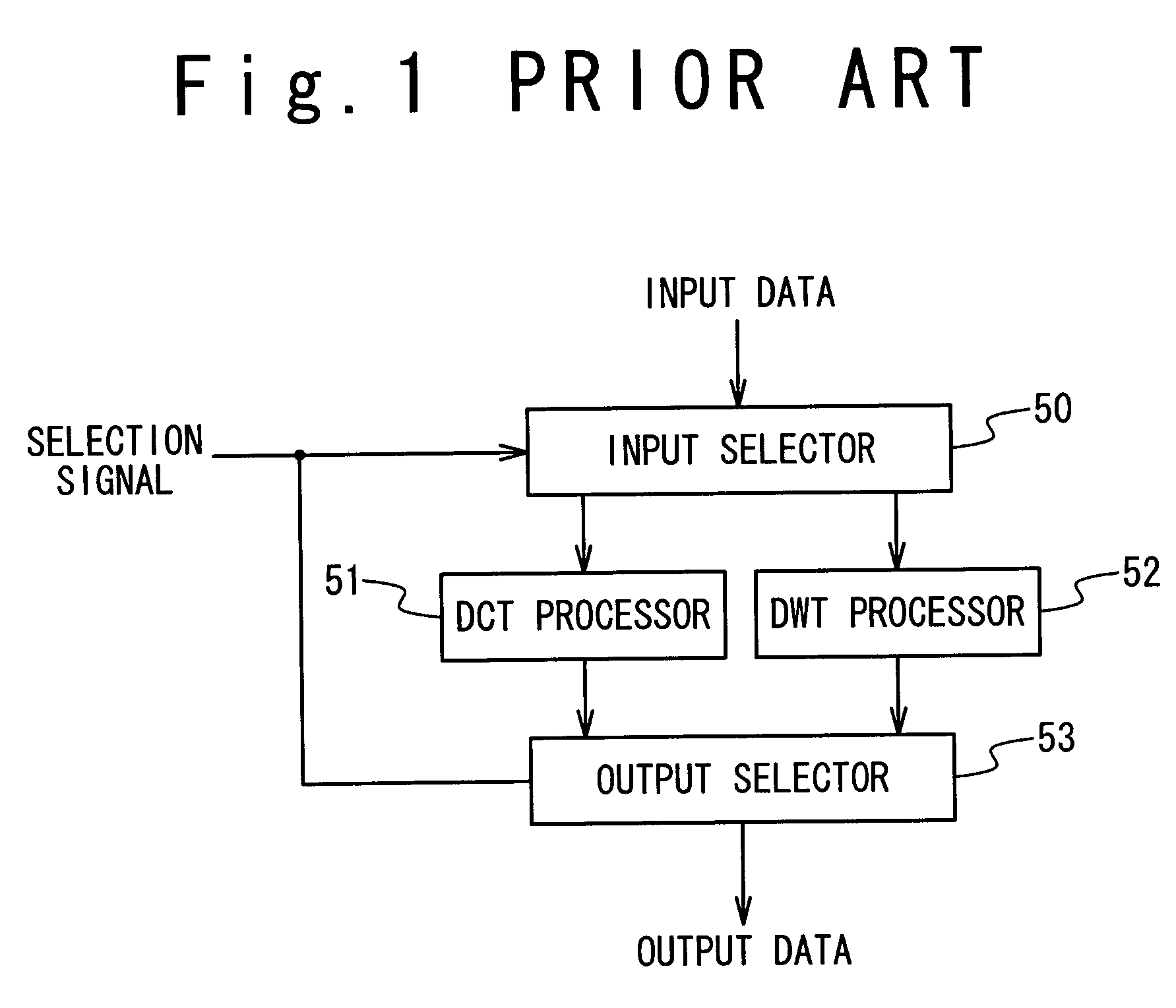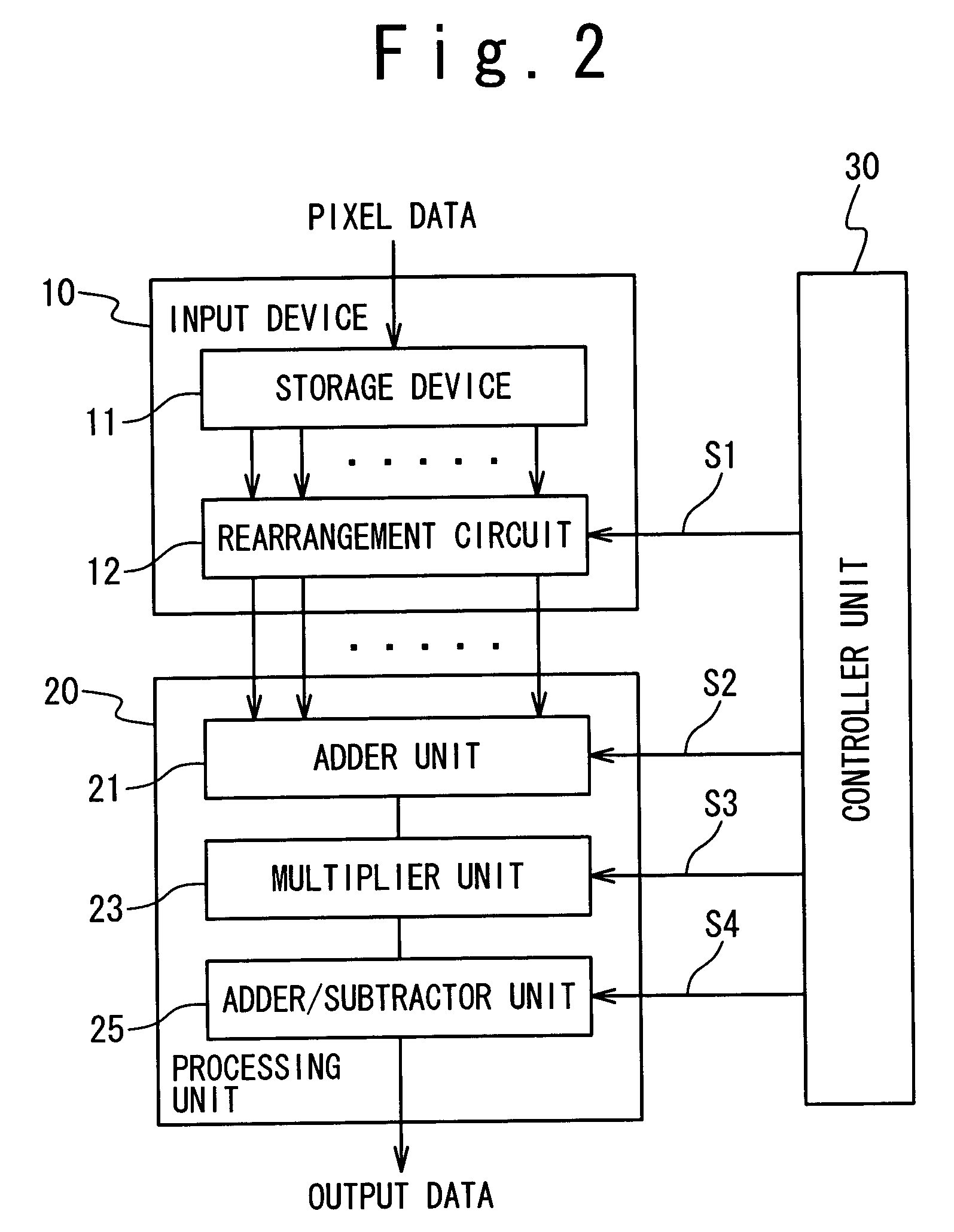Image processing apparatus supporting both discrete cosine transform and discrete wavelet transform
a technology of cosine transformation and image processing, applied in the field of apparatus and method for image processing, can solve the problems of large hardware resources, image deterioration at low bit rate, and inability to support both dct and dwt algorithms, and achieve the effect of reducing hardware resources
- Summary
- Abstract
- Description
- Claims
- Application Information
AI Technical Summary
Benefits of technology
Problems solved by technology
Method used
Image
Examples
first embodiment
[0084]FIG. 2 shows a block diagram of an image processing apparatus in a first embodiment. The image processing apparatus in this embodiment is designed to support both discrete cosine transform and discrete wavelet transform using an irreversible 9 / 7 filter.
[0085]The image processing unit in this embodiment, is composed of an input unit 10, a processing unit 20, and a controller unit 30, which are monolithically integrated within an LSI (large scale integrated circuit).
[0086]The input unit 10 includes a storage unit 11 and a rearranging circuit 12. The storage unit 11 stores therein pixel data received from an external device. The storage unit 11 transfers the stored pixel data to the rearranging circuit 12. As described below, the storage unit 11 is composed of a shift register.
[0087]The rearranging circuit 12 rearranges the order of the pixel data received from the storage unit 11 so that the order of the pixel data is adaptive to the discrete wavelet transform or the discrete co...
second embodiment
[0281]In a second embodiment, the image processing apparatus is designed to perform the discrete wavelet transform using the reversible 5 / 3 filter in addition to the discrete wavelet transform using the irreversible 9 / 7 filter, and the discrete cosine transform.
[0282]FIG. 11 shows a block diagram of the image processing apparatus in the second embodiment. The image processing apparatus in the second embodiment is similar to that in the first embodiment, except for elements enclosed by a dashed line 40. In detail, additional circuits (not shown) are disposed around the adder 211 and 212 to form a reversible processing circuit 41. Furthermore, selectors 42 and 45 are additionally disposed.
[0283]As shown in FIG. 14, the reversible processing circuit 41 includes selectors 46a and 46b, a shifter 47, a selector 48, and a complementer 49. The selector 46a selects one of the pixel data m1, the output of the flip-flop FF14, and the output of the flipflop FF15 in response to a control signal ...
PUM
 Login to View More
Login to View More Abstract
Description
Claims
Application Information
 Login to View More
Login to View More - R&D
- Intellectual Property
- Life Sciences
- Materials
- Tech Scout
- Unparalleled Data Quality
- Higher Quality Content
- 60% Fewer Hallucinations
Browse by: Latest US Patents, China's latest patents, Technical Efficacy Thesaurus, Application Domain, Technology Topic, Popular Technical Reports.
© 2025 PatSnap. All rights reserved.Legal|Privacy policy|Modern Slavery Act Transparency Statement|Sitemap|About US| Contact US: help@patsnap.com



